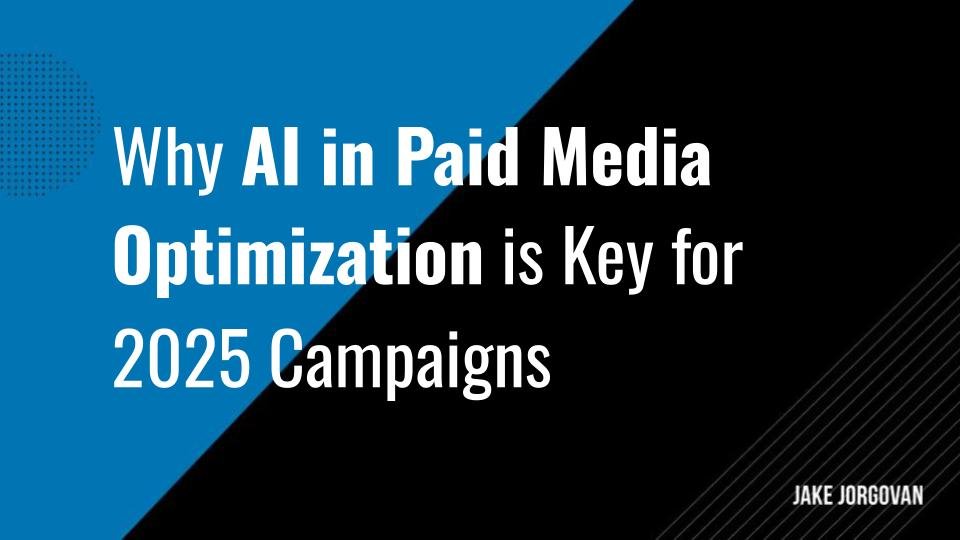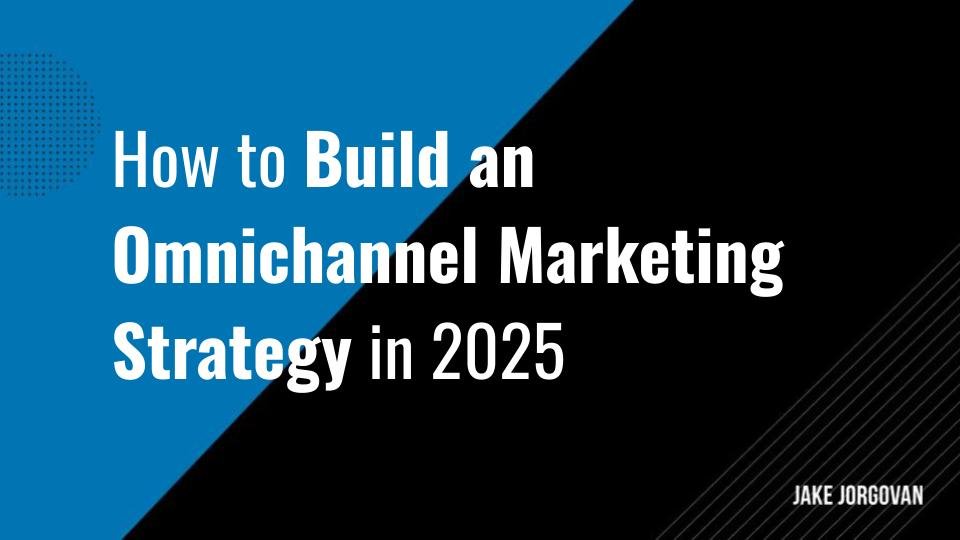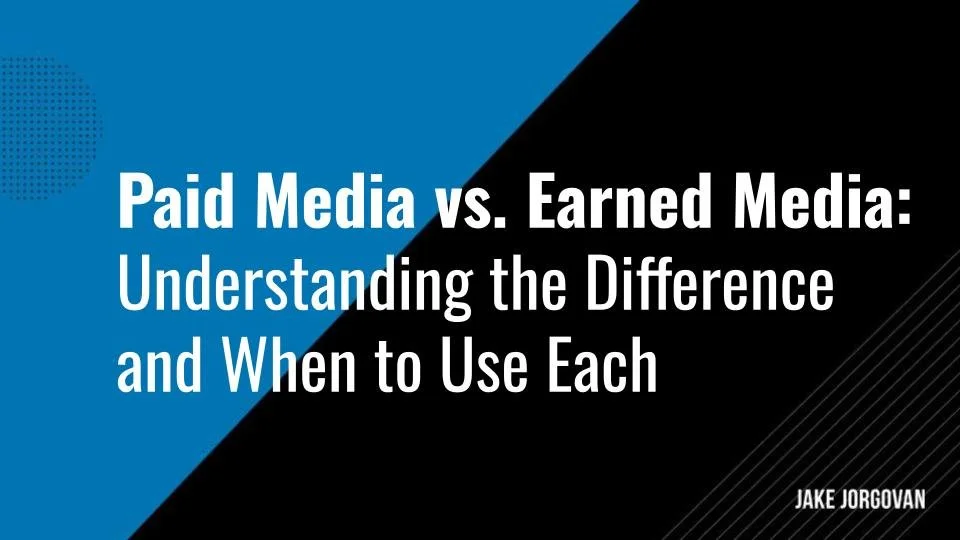Paid Media vs. Earned Media: Understanding the Difference and When to Use Each
According to a survey by Cision, marketers allocate approximately 25% of their digital marketing budgets to paid media and 24% to earned media, highlighting the importance of both strategies in a balanced marketing approach.
Knowing when to use paid media versus earned media – or paid media and earned media – can help you orient your marketing efforts toward more ROI.
You just have to go about things strategically.
Both play important roles in building brand awareness and driving customer engagement, but they serve different purposes and operate in unique ways.
Paid media can provide immediate visibility and traffic, while earned media builds long-term trust and credibility.
Understanding how these two approaches differ—and when to use each—can help you make better decisions and optimize your marketing efforts.
Let’s break down the key distinctions, benefits, and ideal use cases for each.
What Is Paid Media?
In 2024, global digital advertising spending is projected to reach an all-time high of $694 billion, underscoring the significant role of paid media in contemporary marketing strategies.
Paid media refers to any marketing effort where a brand pays to get its message in front of an audience. This can include display ads, search engine advertising, social media ads, and sponsored content. Essentially, you’re paying for space to promote your message, whether it’s through Google Ads, Facebook Ads, or native ads on websites.
The goal is to gain more awareness, traffic, or conversions FAST.
Examples:
Google Ads: This includes search ads that appear at the top of Google’s search engine results pages (SERPs) when people look for specific things. It’s effective for capturing users actively looking for products or services. The average click-through rate (CTR) for Google Ads search campaigns across all industries is approximately 6.11%, indicating effective engagement with users actively seeking products or services.
Social media ads: These social platforms allow you to reach targeted demographics based on interests, behaviors, and demographics. It’s particularly effective for engaging audiences through visually rich content. Social media advertising engagement rates vary by platform, so you have to choose carefully. For instance, TikTok boasts an average engagement rate of 2.65%, while Instagram's stands at 0.70%.
Display advertising: Banners, videos, and other ad formats that appear across websites can help reinforce brand messaging. Display ads are particularly effective for brand awareness, with studies showing that users who are exposed to display ads are 155% more likely to search for brand-specific terms after viewing the ad.
Here’s one Google Ad for realtors:
By comparison, social media ads rely on images and raw, native-like content. Some even use influencers to accentuate the trust factor.
PROS:
Immediate results: Paid media offers quick visibility, which is exactly what you need when launching a new product or running a time-sensitive campaign.
Precise targeting: Platforms like Facebook and Google allow you to reach your ICPs because you can select specific demographics, locations, and interests.
Scalability: As long as you have a budget, you can scale your reach, making it a flexible tool for growing traffic or conversions.
CONS:
Ongoing costs: To maintain visibility, you need to keep spending. Unlike organic reach, paid media stops working when the budget runs out.
Potential high costs: In competitive industries, the cost-per-click (CPC) for paid ads can be high. Unfortunately, that will eat into your profit margins if you don’t optimize your campaigns effectively.
Remember: Paid media is great for quick results and message control, but you need the budget to maintain consistent ad spend. You also need careful management to ensure that you’re getting a good return on your investment.
In the next section, we’ll explore how earned media compares and the unique benefits it can offer.
What Is Earned Media?
Earned media refers to the visibility and coverage you gain organically through word-of-mouth, press coverage, social shares, and user-generated content (UGC).
A Nielsen study found that 88% of consumers trust recommendations from people they know, and 70% trust consumer opinions posted online, highlighting the significant impact of earned media on consumer behavior.
Unlike paid media, where brands directly pay for exposure, earned media is generated when others talk about your brand. This coverage is the result of a well-executed marketing campaign, high-quality content, or an exceptional product or service.
Basically, it’s the digital equivalent of positive PR and results from building a strong reputation and offering valuable experiences to customers.
Examples:
PR coverage: When a publication writes an article about your company, your product launch, or your industry insights, it’s considered earned media. For instance, a tech startup might get featured in an industry magazine as a leader in innovation.
Word-of-mouth marketing: This happens when customers recommend your product or service to their friends, family, or social followers. It’s powerful because it comes with a high level of trust.
Social media mentions and shares: When users tag your brand or share your content without any incentives, it generates earned media. A trending hashtag or a viral video featuring your product can be an excellent example of organic social media engagement. Studies show that 92% of consumers trust earned media more than traditional advertising.
User-generated content (UGC): When your customers share photos or videos of your products, such as unboxing videos or testimonials, it amplifies your brand’s message without the need for paid placements. UGC is perceived as more authentic, with 86% of consumers valuing authenticity when deciding which brands to support.
Here’s an example from Forbes magazine:
The same brand is getting good exposure on social media as well, being mentioned by several creators in the health and diet niche:
PROS:
Greater trust and credibility: Since earned media comes from third-party sources, it is often perceived as more authentic and trustworthy. According to Statista, 89% of consumers trust recommendations from friends and family over paid advertising.
Long-term value: Earned media doesn’t disappear when your ad budget runs out. Positive reviews, testimonials, and press coverage can continue to generate interest and drive traffic long after they first appear.
Cost-effective: While it may require upfront effort to create shareable content or build relationships with influencers, earned media doesn’t require ongoing ad spend. So, after the initial investment, it’s a cost-efficient way to maintain visibility.
CONS:
Harder to control: Earned media can be unpredictable. Negative reviews or unfavorable coverage can spread just as quickly as positive mentions.
Takes time to build: Building a reputation that generates earned media requires consistent effort. You need A LOT of time to establish the relationships and brand trust needed for significant organic reach.
Paid and Earned Media: Main Differences
Let’s look at the key differences between paid and earned media. In the next two sections, we’ll show you how to choose the best strategy based on your marketing goals.
| Category | Paid Media | Earned Media |
|---|---|---|
| Control | Full control: message, timing, and placement. | Minimal control: relies on user or third-party actions. |
| Cost | Ongoing budget needed for ads, production, and fees. | More cost-effective but may involve indirect costs like PR. |
| Longevity | Short-term: visibility ends when the budget stops. | Long-term: lasting impact through reviews and shares. |
| Measurement | Easier: track clicks, impressions, ROAS. | Complex: monitor mentions, sentiment, reach. |
| Speed of Results | Immediate: quick visibility for campaigns. | Slower: builds over time, with potential for viral growth. |
When to Use Paid Media
Paid media is great when your marketing goals require quick visibility, precise targeting, or rapid campaign results.
Here are some scenarios where investing in paid media makes the most sense:
Launching a New Product or Service
When you’re introducing a new product or service, paid media is ideal for generating immediate awareness. Google Ads and Meta Ads allow you to reach a broad audience quickly, ensuring that your message gets in front of the right people at the right time.
Like so:
This can help create buzz around a launch, especially if combined with time-limited offers or promotions to drive initial interest.
Driving Quick Traffic
If you want to skyrocket website visits or app downloads in a short period, paid media is a great option. You can use search ads, display ads, or social media ads to reach people looking for products like your or in specific demographics.
Paid media is especially effective for driving traffic to landing pages during seasonal sales, Black Friday events, or holiday campaigns where time is of the essence.
Retargeting
Retargeting ads address people who have previously interacted with your website or social media pages but didn’t convert. If someone was on one of your product pages but buy that product, you can show them ads with it as they browse other websites.
Retargeting helps keep your brand in the limelight and nudges prospects to come back and finish buying. Studies show that retargeting ads can improve conversion rates by up to 147%, making them a valuable tool for maximizing ROI from your paid media campaigns.
When to Use Earned Media
Earned media is best suited for building long-term trust and credibility, expanding your reach organically, and nurturing sustained engagement. Here’s when you should lean into earned media strategies:
Building Brand Trust
If your goal is to establish your brand as an industry leader or trusted voice, earned media is key. Positive reviews, organic social shares, and media mentions help build credibility with your audience.
When users see third-party sources speaking positively about your brand, it strengthens their perception of your reliability.
For example, a glowing review in a reputable publication can have a more lasting impact than a paid ad because of the perceived authenticity of the source.
Forbes Vetted does this all the time for a wide range of products and categories:
Expanding Organic Reach
Earned media is a powerful way to extend your reach without direct ad spend. When your audience shares your content, engages with your brand, or talks about you on social media, it helps you reach new potential customers. This is especially valuable when targeting younger audiences or niche communities who value peer recommendations. Brands that encourage user-generated content (UGC) can see a substantial increase in organic reach.
Sustaining Long-Term Engagement
If you’re looking to keep your audience engaged over time, earned media can maintain ongoing interest in your brand. A well-placed article, a viral social media mention, or a positive review can keep your brand in conversations long after the initial campaign has ended.
This long-term engagement is crucial for industries like B2B services or luxury goods, where purchase cycles are longer, and trust is a key deciding factor.
Integrate Paid and Earned Media for Maximum Impact
Combining paid and earned media strategies allows you to achieve immediate results while building long-term credibility.
Pro tip: Paid media can serve as a catalyst for generating earned media and vice-versa.
Example: A well-crafted paid ad campaign can spark organic discussions on social media or encourage influencers to share their thoughts about your brand.
Similarly, running paid campaigns to promote user-generated content can boost the visibility of authentic content, amplifying its impact.
Another example: If a customer posts a glowing review on social media, you can use paid ads to feature that review, reaching a broader audience while maintaining the authenticity of earned media.
Let’s look at how the big players are doing it.
GoPro turns UGC into ads.
GoPro effectively combines paid media and earned media by promoting user-generated content through paid social ads. This strategy not only highlights the capabilities of their products but also leverages the authenticity of user stories, creating a virtuous cycle of engagement and brand trust.
By contrast, Old Spice turned its iconic ad into UGC.
Old Spice used paid media to launch their memorable ad, which quickly became a viral hit. The initial investment in paid media led to a surge of earned media as users shared and remixed the ad across social media. The campaign became a benchmark for how paid efforts can drive organic momentum.
Conclusion: Finding the Right Balance for Your Marketing Strategy
Paid and earned media each have their unique strengths and applications. Paid media is ideal when you need quick results, precise targeting, and control over messaging, while earned media builds credibility and organic reach over time.
The most successful brands know how to balance both, using paid efforts to spark conversations that lead to earned media. By understanding when and how to use each type, you can create a digital marketing strategy that drives immediate results while building lasting connections with your target audience.
Whether you’re launching a new product or looking to enhance brand trust, leveraging the right mix of paid and earned media is key to sustainable growth.
FAQ
What is the main difference between paid media and earned media?
Paid media involves paying for advertising placements on search engines or social media promote your brand. Earned media, on the other hand, is gained organically through word-of-mouth, PR, or user-generated content without direct payment. Paid media gives you immediate control and reach, while earned media offers long-term credibility.
Can paid media help boost earned media?
Yes, paid media can amplify earned media by increasing the visibility of organic content. For example, you can use paid ads to promote user-generated content or a positive article about your brand, making it more likely to be seen and shared. This helps build momentum and reach a wider audience.
Which is better for brand awareness: paid or earned media?
Both have their benefits for brand awareness. Paid media is effective for quickly building awareness, especially during product launches or sales. Earned media, however, is more trusted and can sustain awareness over time. A combination of both often yields the best results, creating a balance between immediate reach and long-term trust.
How do you measure the success of earned media?
Measuring earned media can be more complex than paid media. Key metrics include the volume of brand mentions, reach and impressions of organic content, social media engagement (likes, shares, comments), and sentiment analysis. Tools like BuzzSumo, Google Alerts, and Brandwatch can help you track these metrics.
Is it possible to convert paid media into earned media?
Yes, a successful paid media campaign can generate earned media if it resonates with the audience. For example, a creative ad might go viral and be shared widely, turning into organic buzz. Similarly, using paid ads to promote user-generated content can encourage more people to share their own experiences, blending paid efforts with organic reach.
How can businesses integrate paid and earned media to maximize their marketing impact?
Focus on leveraging one to amplify the other. Promote user-generated content or customer reviews through display ads or Google Ads to expand their reach to a broader audience. Invest in influencer partnerships to spark earned media by creating compelling advertisements that encourage shares. Monitor engagement metrics closely, and use data-driven decisions to identify which earned content resonates most with your target audience. Paid campaigns can drive initial visibility, but pairing them with high-quality content ensures sustained interest and better conversion rates.
What are the challenges of measuring ROI in earned media compared to paid media?
Earned media ROI is harder to quantify due to its indirect nature. Unlike paid media, where analytics tools provide clear metrics like Cost per Acquisition or Click-Through Rate, earned media relies on tracking shareable content, audience insights, and sentiment analysis. The lack of control over third-party actions makes it challenging to attribute conversions directly. Tools like social media analytics or feedback from customers can help estimate ROI, but ongoing costs for monitoring and managing data can add complexity.
In what scenarios might a company prioritize paid media over earned media?
Paid media is ideal for time-sensitive campaigns, product launches, or entering competitive industries where rapid visibility is necessary. Display advertising on digital advertising platforms can drive conversions quickly, especially when targeting specific customer acquisition goals. Companies with budget constraints may also choose paid media to ensure a direct return on investment within defined campaign objectives.
How can negative outcomes in earned media be mitigated or managed?
Negative earned media, such as unfavorable customer reviews, requires immediate response strategies. Build relationships with influencers and loyal customers to generate positive mentions that outweigh criticism. Address concerns transparently, showing commitment to exceptional product experiences. Incorporating audience insights into future campaigns can also prevent recurring issues. Combining earned content with direct traffic from paid ads can help control the narrative.
What are the long-term benefits of a successful earned media strategy?
A successful earned media strategy builds consistent trust, leading to organic growth over time. Positive mentions, mouth referrals, and loyal customers reduce dependency on direct payment for visibility. It enhances long-term credibility and drives purchasing decisions through authentic user experiences. As a form of advertising, earned media provides valuable insights into customer behavior, helping refine your digital marketing plan and SEO strategy.



























![Top 22 Paid Media Agencies to Work With in 2025 [Updated in March]](https://images.squarespace-cdn.com/content/v1/50baa49de4b0e51d69257e33/1705515561307-56Z45GN80B4L6J77ELDR/Top+12+Paid+Media+Agencies+to+Work+With+in+2024+%5BUpdated%5D.jpg)











